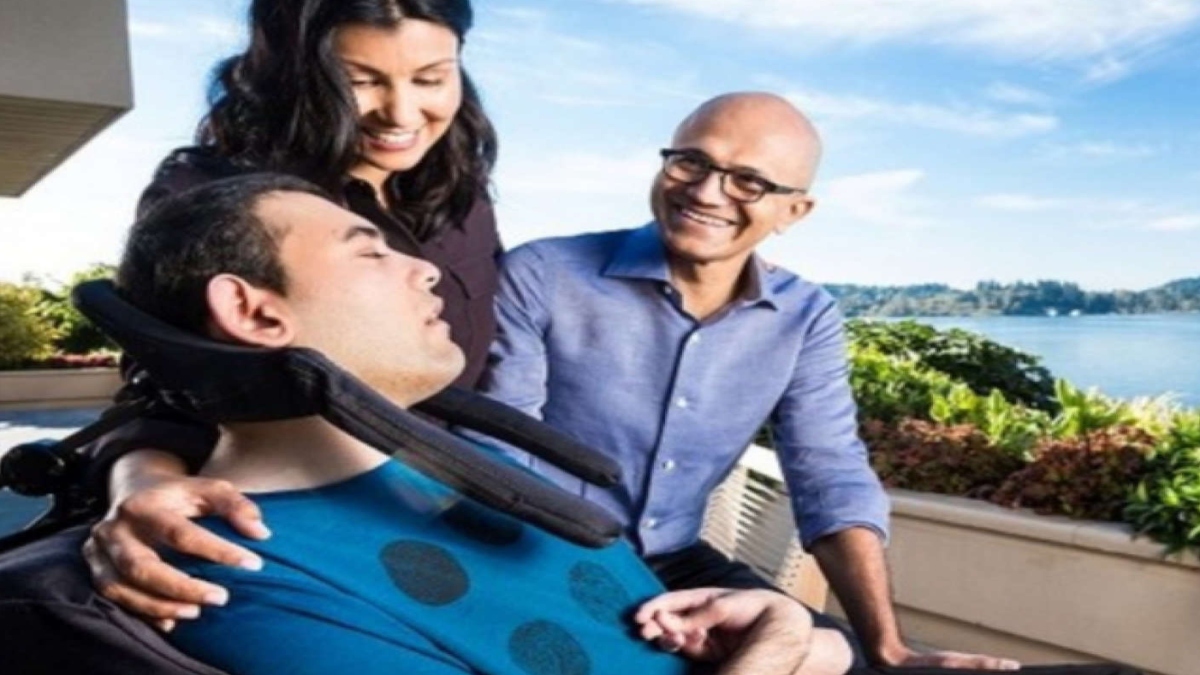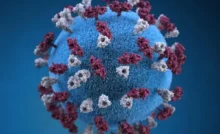As Microsoft CEO Satya Nadella’s son Zain, who was born with Cerebral Palsy (CP), died on Tuesday at the age of 26, this rare congenital disorder that he suffered from, has been abuzz today.
While Cerebral means related to the brain, Palsy means weakness or problems with using the muscles. Hence, Cerebral Palsy is a group of disorders that affect movement and muscle tone or posture. Nadella, in October 2017, had shared one of the experiences when his wife was pregnant with Zain in a blog post titled ‘The moment that forever changed our lives’. He had mentioned that his son was born at 11:29 pm on 13 August 1996, all of three pounds and he did not cry. “Zain was transported from the hospital in Bellevue across Lake Washington to Seattle Children’s Hospital with its state-of-the-art Neonatal Intensive Care Unit. Anu began her recovery from the difficult birth. I spent the night with her in the hospital and immediately went to see Zain the next morning. Little did I know then how profoundly our lives would change,” Nadella added. He continued, “Over the course of the next couple of years, we learned more about the damage caused by in utero asphyxiation, and how Zain would require a wheelchair and be reliant on us because of severe cerebral palsy. I was devastated. But mostly I was sad for how things turned out for me and Anu.”
CP is caused by damage in the brain which results in abnormal development due to lack of oxygen in the brain, at the time of birth. It affects a person’s ability to control his or her muscles. Several other factors can also lead to problems with brain development like maternal infections, traumatic head injury, genetic mutations, bleeding into the brain, infant infections and fatal stroke. CP can affect the whole body, or just be limited to one or two limbs, or one side of the body. Usually, signs and symptoms include problems with movement and coordination, speech and eating, and development, besides other issues. Children with cerebral palsy often have associated conditions. These are conditions that a person has in addition to CP that can affect a child’s quality of life. Children or adults with the disease may face respiratory difficulties, speech impairment, oral motor impairment, digestive issues, vision impairment, hearing impairment, epilepsy (seizures).
A person with severe CP might need to use special equipment to be able to walk, or might not be able to walk at all and might need lifelong care. Meanwhile, a person with mild CP, on the other hand, might walk a little awkwardly, but might not need any special help. The condition does not get worse over time, though the exact symptoms can change over a person’s lifetime. This is a non-progressive disease of the brain and it usually happens before a child is born, but it can also occur at birth or in early infancy (first three years).
The symptoms of CP can vary from person to person. However, Dr Arun Sharma, Senior Consultant Neurosurgeon, Indian Spinal Injuries Centre says that some common symptoms of the condition include “Delayed milestones, weakness of limbs, spasticity of limbs, low IQ and difficulty or inability to walk.”
Milestones are the predicted points for when a child reaches a significant stage in their development such as walking or talking. A delayed milestone is when a child has not reached a significant stage at the predicted age.
Since CP can develop during the early years of birth, Dr Sharma suggests that precautions for the condition include “proper maternal and neonatal care along with avoiding Hypoxia during birth.”
Expanding upon the subject, Dr Manish Mannan, HOD- Paediatrics and Neonatology, Paras Hospitals Gurugram, said, “There are no methods currently to fully prevent cerebral palsy from developing during pregnancy, delivery or shortly after birth. This is because the exact cause of the disease is not fully understood yet. However, there are several things that parents and doctors can do to reduce the chances of CP. Expecting parents must maintain good habits and stay healthy.” He suggested that routine doctor visits are a must to catch any potential complications that would affect a child’s development in the womb. Certain issues such as incompatible blood types can be treated to reduce the risk of CP.
Some other ways that may help prevent the condition include getting vaccinated appropriately, controlling underlying health conditions, avoiding exposure to infections or viruses known to impact fetal health, avoiding drinking and smoking.
Dr Mannan further explained that there are different types of CP that affect various parts of the brain and that each type causes specific movement disorders. He said, “The types of CP are Spastic cerebral palsy, Dyskinetic cerebral palsy, Hypotonic cerebral palsy, Ataxic cerebral palsy, and mixed cerebral palsy. We can divide them into mild, moderate, and severe. Spastic CP is the most common type of CP, affecting approximately 80 per cent of people with this disease. It causes stiff muscles and exaggerated reflexes, making it difficult to walk. People with dyskinetic CP have trouble controlling their body movements. The disorder causes involuntary, abnormal movements in the arms, legs, and hands.”
“Hypotonic CP causes diminished muscle tone and overly relaxed muscles. Ataxic CP is the least common type of CP. It is characterized by voluntary muscle movements that often appear disorganized, clumsy, or jerky. Some people have a combination of symptoms from the different types of CP. This is called mixed CP,” the doctor continued.
As there is no cure for CP, only treatment can improve the lives of those who have the condition. Treatment options can include medications, therapies, surgical procedures, and other treatments as needed.
Dr Mannan says, “Medications that can lessen muscle tightness might be used to improve functional abilities, treat pain, and manage complications related to spasticity or other cerebral palsy symptoms. Therapies may include physical therapy, occupational therapy, speech and language therapy and recreational therapy. Surgical procedures may include orthopaedic surgery and cutting nerve fibers.”
Children and adults with cerebral palsy may require lifelong care with a medical care team. Selecting care will depend on his or her specific symptoms and needs, and needs may change over time. Early intervention can improve outcomes. The unfortunate news of Zain’s demise was shared on Tuesday by Microsoft in an email, asking the executives to hold the grieving family in their thoughts and prayers.










